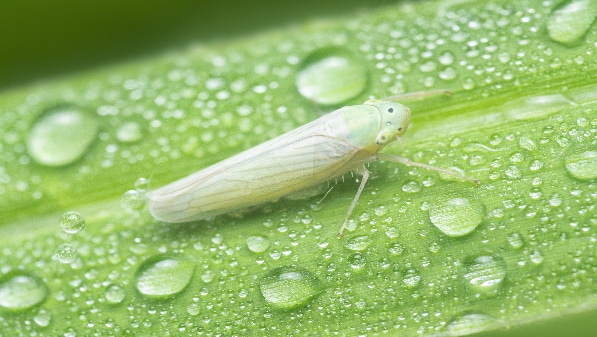Potato Leafhopper
Potato Leafhoppers are a common mid to late season alfalfa pest that cause yield and quality damage to our alfalfa stands. The adults are a yellow or lime green color with a wedge shaped body that is only about 1/8 of an inch in size. Adults can fly or jump when they are disturbed whereas the nymphs can only crawl. Nymphs are smaller in size and paler in color. Both developmental stages affect alfalfa plants. They are equipped with a piercing/sucking mouth that extracts sap from the phloem of alfalfa leaves. This causes leaves to show chlorosis or a yellow V shaped burn at the tip of the leaves, especially in the upper canopy. Severely infected plants will have leaves turning a reddish/bronze color and the plants themselves will appear stunted. Once this “hopperburn” (V shaped chlorosis) is detected, the damage is already done to that cutting of alfalfa. No corrective action can be taken for that cutting, but you can manage them for subsequent cuttings. It is common to see the biggest impact from potato leafhoppers on new seedings as well as 2nd and 3rd cuttings of alfalfa. Potato leaf hopper resistant alfalfas are on the market to help reduce the insect impact and yield loss. PLH alfalfas have glandular hairs on the stem that inhibit the adults’ mouths to penetrate the stem and the nymphs get caught in the sticky hairs.
- Thresholds for potato leaf hoppers are as follows:
- Under 3 inches = 20 adult potato leafhoppers per 100 sweeps
- 3 to 8 inches = 50 adult potato leafhoppers per 100 sweeps
- 8 to 12 inches = 100 adults or nymphs per 100 sweeps
- Over 12 inches = 200 adults or nymphs per 100 sweeps
